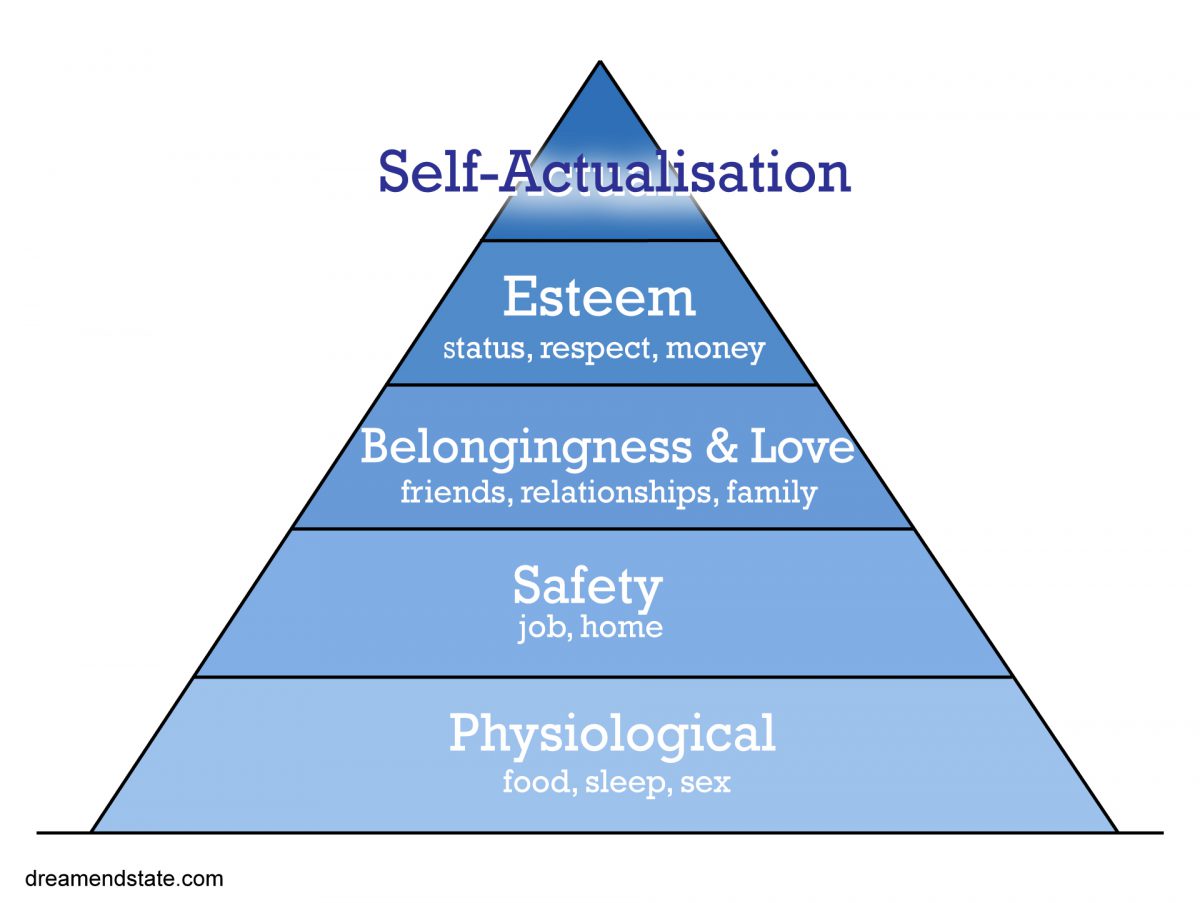Everyone has seen some version of this pyramid. But what exactly does it do?
American psychologist Abraham Maslow created his hierarchy of needs to explain what motivates certain behaviours. His theory was that once you’ve largely satisfied one need, it no longer motivates you. The next need in the hierarchy becomes the main motivation, and you feel its absence more noticeably.
Managers can use it to work out what does and doesn’t motivate their team members.
The basic needs are:
- Physiological: the most basic needs for survival, such as food and water.
- Safety: not just physical security, but also structure, stability and order. This is why people prefer secure jobs and savings accounts to starting a business or investing.
- Belongingness and love: friends, family, socialising and working with familiar colleagues. Maslow blamed urbanisation, mobility and the breakdown of traditional groupings for the rise in feelings of alienation and loneliness, half a century ago. Plus ça change.
- Esteem: this comes in two parts. The need for respect, recognition, attention and appreciation from others. And the need for self-respect and self-confidence — ultimately, liking yourself.
- Self-actualization: a feeling of fulfilment, achieving your potential and being true to your own nature. As Maslow described it, “a musician must make music, an artist must paint, a poet must write”.
To put it another way, if you’re alone on a desert island with plenty of food and water and no obvious dangers, you’ll probably wish you had some friends with you. You won’t think about food or safety much, or yearn to write poetry.
Maslow argued that people who satisfy all five basic needs are more intuitive, creative, curious, calm and open. They lose prejudice and “robot-like conventionality.”
Therefore, employees who are respected and have opportunities to pursue their goals and win recognition will not only be motivated to succeed, but more effective in getting there.
Watch out for
Achieving self-actualization doesn’t mean job done, and they lived happily ever after. There will always be a new goal to reach, a new desire to motivate you. Maybe the poet will one day find they don’t like writing poetry any more. If you expect eternal satisfaction, prepare to be dissatisfied.
You also don’t need 100% achievement in one need to move up to the next. In fact, Maslow said that most people are “partially satisfied in all their basic needs and partially unsatisfied in all their basic needs at the same time.” Of course, it’s possible to move down as well as up the hierarchy as your needs and motivations change over time.
Despite the popularity of the Maslow’s hierarchy, there’s scant recent data to support it…
Contemporary science — specifically Dr. Edward Deci, hundreds of Self-Determination Theory researchers, and thousands of studies — instead points to three universal psychological needs. If you really want to [take] advantage of this new science – rather than focusing on a pyramid of needs – you should focus on: autonomy, relatedness, and competence.
Susan Fowler, (2014, HBR)
Still, the pyramid could be a useful lens through which to assess your own life choices and consider whether the needs of your family and work colleagues are being met.
With thanks to Ivan Edwards who wrote most of this post. Thanks Ivan!
Resources
Abulof, U., (2017) Introduction: Why We Need Maslow in the Twenty-First Century.Society 54. Springer.
Bolton, J. & Naybour, P., (2014) The APM Project Management Qualification Study Guide. Association for Project Management.
Fowler, S. (November, 2014) What Maslow’s Hierarchy Won’t Tell You About Motivation. Harvard Business Review
Kremer, W. & Hammond, C., Abraham Maslow and the pyramid that beguiled business (2013), BBC News Magazine.
Maslow, A. H., (1970). Motivation and Personality.Harper & Row.

